Inside Sales Success: Best Practices to Improve Your Sales Process
Best Practices for More Selling Time for Sales Reps
How much time are your inside sales reps spending selling? A few years back, I read a study saying that average sales reps only pay 35% of their time selling.
My first thought was, “That can’t be right!” But think about it – how much time do your sales reps spend entering data into Salesforce, browsing prospects’ social media feeds, leaving voicemails and creating their own sales materials?
Unfortunately, the answer is probably “way too much time.”
We know that even the most efficient sales reps have to spend a certain percentage of their time on administrative tasks. But think of how powerful it could be if every rep on your team could spend just one extra hour of each day selling.
That’s 20 hours a month of sales time per rep. If your sales team is 50 reps deep, that’s 1,000 more hours a month of extra sales time. Make no mistake about it – ramping up sales productivity can be the shortest path to ROI.
Here are ways that you can help your reps regain valuable sales time and close more deals.
Help Reps Prioritize Leads
Every minute a rep spends trying to decide who to call is one minute they aren’t selling. It pays to help your reps prioritize leads. This not only can save them time deliberating between who to call, but it also enables reps to spend more time selling to the hottest prospects.
One way to do this is to share real-time marketing automation data with reps. Marketing automation tools like Marketo and Pardot offer views for sales reps that help them prioritize who to call based on lead scores and trigger events (such as filling out a form or downloading an eBook). Another way to help reps hit the ground running is for managers to create pre-prioritized lead views in Salesforce.
This enables outbound prospectors to power through lists without wondering who to dial next.
Use Salesforce Content
For the most part, sales reps should not be creating their own content. Research shows that sales reps spend 35 hours every month searching for and creating their own content. Even if your reps are spending half this long, it’s a giant productivity killer. When sales reps are creating their own content, it usually means one of two things.
Either marketers aren’t creating the right content for salespeople, or reps can’t find the content they need. The quickest way to solve both of these problems is by using Salesforce Content.
As someone who has worked on both the sales and marketing side, I can’t speak highly enough about this tool. Marketers can use Salesforce Content to set up searchable libraries full of content that can help sales reps close deals.
Not only does it make it extremely easy for sales reps to find the right content to provide prospects with, but it also enables marketers to track which content is actually being used to close deals.
Log CRM Data Automatically
If we’re being honest, most reps have a love-hate relationship with their CRM. Reps love being able to quickly access valuable data about prospects like their sales history and past communications. But few sales reps enjoy logging data in their CRM after a call. One of the best ways to get sales time back is by automatically capturing as much data in your CRM as possible.
We’re currently helping our customers log every call, including in-depth call metrics, call recordings, and more, automatically in Salesforce. The result is that sales reps don’t have to break their flow after a call to enter a lot of data in their CRM manually. Instead, they’re free to quickly dial their next prospect.
Automate Voicemail Messages
Your reps are probably spending a lot more of their time leaving voicemails than you think. The typical sales voicemail lasts around 30 seconds. If a rep leaves even 25 voicemails a day, that’s over an hour a week. And in many industries, sales reps leave well over 100 voicemails in a single day. Voicemail automation can be an easy way to give sales reps more time to sell.
Revenue.io’s voicemail automation tool enables reps to leave perfectly recorded voicemail greetings with just one click. Our customers who are using this feature are saving hours of sales time every month.
Specialize Reps By Roles
When inside sales reps have to prospect for their own leads, follow up with leads from marketing, ensure current customers are successful and close deals, productivity is bound to suffer.
Specializing reps by role is a great way to maximize productivity, since switching from role to role is a productivity killer. It saves a lot of time when prospectors can spend all of their time honing their prospecting skills, lead response reps only have to follow up with inbound leads from marketing campaigns and account executives can spend all of their time closing deals.
This also enables managers to provide reps with tools that make reps more productive within their roles. For example, we provide our customers with tools that help prospectors connect with more outbound leads, as well as tools that empower inbound reps convert more callers into customers.
Spend Less Time in the Field
A Bridge Group Study showed that inside sales jobs and career demand is up 54%. While there is no exact substitute for an in-person connection, phone-based sales might offer your business better overall ROI.
Eliminating factors like travel time can help reps spend more time having sales conversations. Sure, there might be occasions when it is best to meet with prospects or customers face-to-face, but it is becoming more common to handle key meetings over the telephone or using video conferencing tools.
For example, in my experience, working in sales as well as marketing on the agency side, I have had years-long relationships with customers that I have never met in person.
View Customer Data in Context
Sales is all about building relationships and connections with leads, and the right data can enhance these connections. Customer data is everywhere: online, in your CRM and on social media sites. The social web can offer a lot of valuable insight to reps. For example, if I know that a prospect just took a trip to the Bahamas from her Facebook feed, or if I can tell from LinkedIn that she just was promoted, I can use that data to help me during sales calls. But the fact is, acquiring this data is often time-consuming.
So much so that some sales reps and managers are hesitant to integrate social media research into their sales processes for fear that it would take too much time away from selling.
This is a conundrum, since social data can be used to improve sales ROI. The challenge is how to make prospect data useful in context. According to a CSO Insights report, sales reps spend 24% of their time researching to prepare for sales calls. But the right listening tools can greatly reduce the amount of time spent researching customers.
We designed our sales applications to quickly empower reps to view prospects’ data from LinkedIn, Twitter, Facebook, Salesforce.com and more within the context of a call. Reps can now view all their customer data in aggregate before outbound sales calls, or anytime the phone rings.
Get the Right Collateral from Marketing
At many organizations, there is a permeating belief that Marketing doesn’t understand Sales’ needs. Marketers spend hours creating fancy decks, whitepapers and videos, but around 90% of this collateral is never used by sales reps. It’s not that sales reps don’t need collateral – in fact, salespeople spend around 30 hours each month searching for and creating their own selling materials.
Obviously this indicates a need for sales and marketing managers to spend more time communicating in order to determine which sales materials reps actually need. Tools like Salesforce Content can play a powerful role in the sales and marketing alignment process. For example, marketers can see which materials sales reps are downloading ,and which materials contribute to sales.
Simplify Note Taking
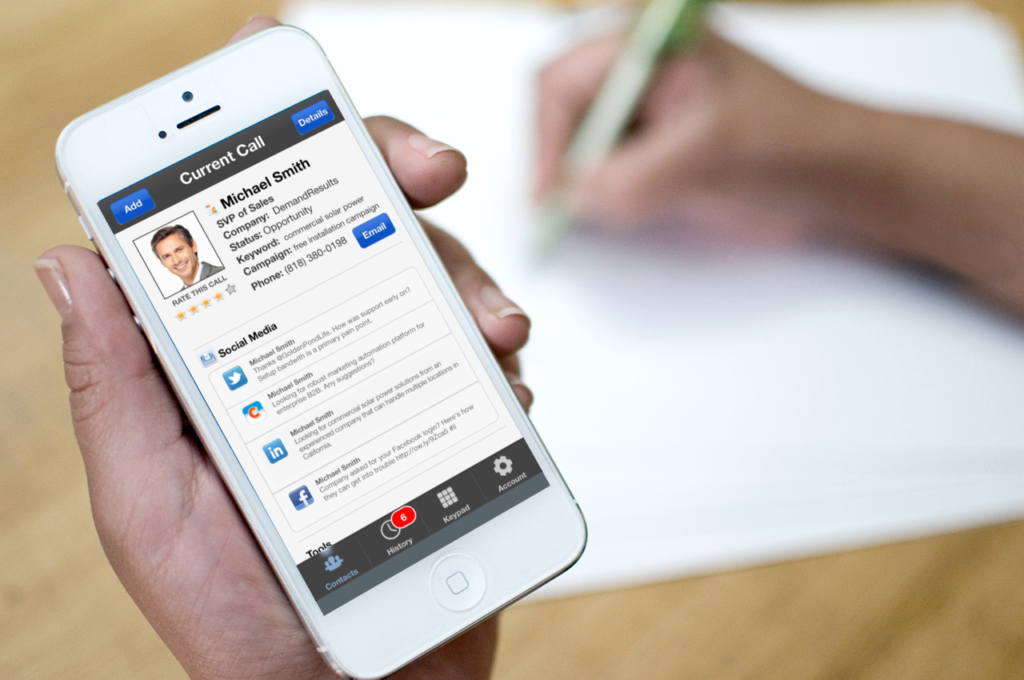 Taking notes can be an important part of sales. Don Cooper’s Sales Heretic blog lists some smart ways that notetaking can help boost sales. But many sales reps spend too much time taking notes.
Taking notes can be an important part of sales. Don Cooper’s Sales Heretic blog lists some smart ways that notetaking can help boost sales. But many sales reps spend too much time taking notes.
One way that a salesperson can continue to improve is to recognize which details are worth remembering and which are less relevant. Imagine you’re selling enterprise marketing automation software. It might seem important at the time that a prospect’s daughter’s favorite movie is Dumbo, but this detail might not be as relevant as the fact that he’s unhappy with his current solution’s feature set.
But sometimes, small details can be important. Suppose you close that deal and your CEO is invited to the prospect’s daughter’s birthday. That tidbit about Dumbo might just come in handy.
As a best practice, we recommend that sales reps limit their note taking to the most relevant bits of information, but also record important calls to keep a record of more minute details. Revenue.io makes it easy for sales reps to take notes in the app, and then automatically append those notes to their call record in Salesforce.com.
We also make it easy to record calls and save them to customer records in Salesforce.com.
Minimize Manual Data Entry
When I was working in inside sales, I would have to log every detail manually in our CRM. This took a lot of time and eventually my manager determined that keeping records of this data didn’t offer good ROI because of the time it took to get it in the CRM.
Entering sales data in a CRM tool like Salesforce.com is either something that sales reps hate because it takes time away from selling, or something that sales reps simply don’t do, for the same reason. Revenue.io’s mobile apps sync with Salesforce.com and automatically log activities in the CRM. That way, sales managers get the call data they while allowing inside sales reps to spend more time selling.
Keep a Close Eye on Call Metrics
The most important part of sales process optimization is measuring whether your tactics are yielding results. Monitoring metrics like calls-per-day or how may hours reps spend on the phone each day can help managers to know whether new strategies or optimization tools are having the desired effect.
If you are able to integrate call metrics into Salesforce.com, you can also gain access to revenue metrics and see how changes to the sales process are affecting the bottom line.
How to Handle Inbound Sales Calls Like a Pro Using Buyer Intent Data
What do most inside sales reps really know about incoming leads the moment the phone rings? Sadly, the answer is usually nothing. But there is actually a lot of data that can show reps why prospects call.
B2B marketers regularly capture a wide variety of data about customers’ buying intentions in CRMs like Salesforce. And with the right tools, this customer intent data can be delivered to reps in the context of inbound calls, enabling reps to kick off each sales call with a competitive advantage.
What is Customer Intent Data, and Why is It Important?
Customer intent data is any data that offers insight into what a customer or prospect wants. However, prospects don’t always do a great job of communicating what they want, even when speaking to a sales reps. At times, they deliberately hold back specific information. The sooner sales reps know what a customer wants, the better chance they have to close the deal.
 When I was working as an inside sales rep, I took a lot of inbound calls from leads who had seen our ads on Google or through other marketing channels. But I never knew who was calling or what they wanted to purchase without asking them a series of questions. I look back now and wonder how much easier it would have been to close deals if I had a darn good idea of why a prospect was calling before even picking up the phone.
When I was working as an inside sales rep, I took a lot of inbound calls from leads who had seen our ads on Google or through other marketing channels. But I never knew who was calling or what they wanted to purchase without asking them a series of questions. I look back now and wonder how much easier it would have been to close deals if I had a darn good idea of why a prospect was calling before even picking up the phone.
In today’s world, prospects don’t often take the time to pick up their phones unless they have a good reason. According to Google research, 61% of the time, that reason is that they want to buy something.
Anyone who has ever worked as an inside sales rep will tell you there is little room for error. Time that you spend trying to figure out what a lead wants, time that leads are put on hold while you do research and time spent transferring calls to the right reps all adds up.
But the quicker you discern a prospect’s intentions, the faster you can solve their pain points and close revenue.
Types of Customer Intent Data
Let’s explore some of the types of buyer intent data and how this data can be used to help reps close more deals.</p></p>
Marketing Referral Data
Imagine you’re an inside sales rep at a B2B company that offers a wide range of financial services. If you knew that a prospect was calling because she saw your number on a direct mailing about annuity buyouts, you could know why she was calling before you even pick up the phone. Call tracking data can be shared with inside sales reps in real time the moment the phone rings. Even if you’ve never spoken to a customer before, you can know what channel, campaign or even keyword they searched for.
Communications History Data
After your company has already spoken to a lead or if a lead
filled out a form, more data becomes available during inbound calls. This is known as progressive profiling. B2B sales is almost always high-touch and collaborative. And since B2B sales cycles are often long, a prospect may have had an in-depth sales conversation 6 months ago with a rep who no longer works at your company. But by accessing communications history data during inbound calls, you can quickly see whether a lead called before and what the result of that conversation was.
Salesforce Chatter is a great way for reps to collaborate when closing deals. Chatter enables reps to see a lead’s communications history in moments. A wealth of other data points can also be stored in CRMs like Salesforce.com and then delivered to inside sales reps during inbound calls, such as purchase history and deal status.
Company News Data
If I knew that a prospect was calling from a company that
recently received $55 million in funding, it might influence my sales strategy. I might be more inclined to up-sell or cross-sell, in order to maximize the deal size. One B2B-focused feature that we built into our sales apps is the ability to automatically view news feeds about a prospect’s company when they call.
Using Customer Intent Data to Optimize ROI
Marketers regularly use Salesforce.com, call tracking solutions, marketing automation solutions and other systems of record in order to capture prospects’ intentions and preferences. But many marketers don’t realize that this data can be delivered to sales reps in real time in order to improve sales conversations. Here are a few ways that Revenue.io can help businesses using Salesforce.com leverage intent data to optimize inbound calls.
Intelligent Call Routing
When I was part of an inside sales team, we realized that our team worked best by having each rep specialize in selling a specific product. At many companies there are sales specialists that cover a particular set of solutions or verticals. Revenue.io is able to determine a prospect’s intention through call tracking data that’s stored in Salesforce and then route the call to the most qualified rep or sales group available. This is one way that Revenue.io uses customer intent data to improve close rates. And best of all, this process happens automatically.
Delivering Marketing Referral Data
After calls are routed, reps can see the specific promotion and keyword that caused a prospect to call before picking up the phone. This helps reps prioritize leads in queues and have smarter sales conversations.
Smart Talking Points
Revenue.io can also be configured to deliver talking points, cross-selling opportunities and available promotions based on a lead’s referral source. This can help reps to have smarter conversations and close more deals than ever before.
How to Optimize Sales Call Messaging for Inside Sales Reps
Revenue.io offers a lot of tools that can help inside sales reps connect with more prospects. But unless reps are delivering the right messaging, more conversations won’t lead to more revenue. As a sales coach, one of your most important duties is to not only ensure that reps have the tools they need to succeed, but also deliver the right sales messages.</p>
Our customers often ask us what are the best ways to drive more sales revenue. To that end, here’s some best practices on call messaging. These actionable tips can you optimize your call messaging to maximize revenue.
Step 1: Identify Underperforming Reps
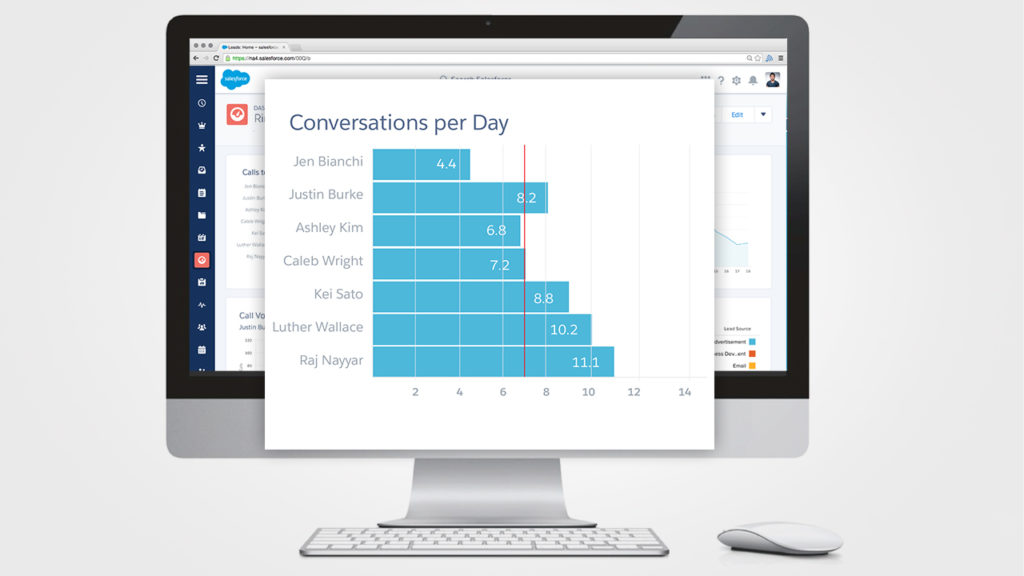 We like to tell sales managers to begin with analytics. Revenue.io offers dozens of plug and play call analytics dashboards that help managers identify coaching opportunities. Hopefully you have some reps on your team who consistently hit and exceed their numbers. But you may have other reps who are falling short of their goals. Try to examine why these reps aren’t making their numbers. As an example, if a laggard SDR is dialing far less prospects than your A-players, it might be as simple as instructing that SDR to make more dials per day.
We like to tell sales managers to begin with analytics. Revenue.io offers dozens of plug and play call analytics dashboards that help managers identify coaching opportunities. Hopefully you have some reps on your team who consistently hit and exceed their numbers. But you may have other reps who are falling short of their goals. Try to examine why these reps aren’t making their numbers. As an example, if a laggard SDR is dialing far less prospects than your A-players, it might be as simple as instructing that SDR to make more dials per day.
Step 2: Listen to Calls
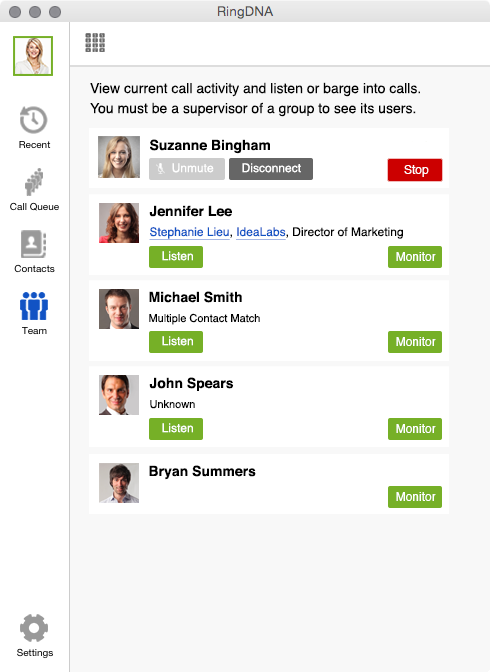 But often there are issues that can’t clearly be gleaned from dashboards. You might have two SDRs who are making roughly the same amount of dials and having around the same amount of conversations each day. However, one SDR might be booking three times as many meetings. In such cases, managers need to get in the weeds and listen to reps’ messaging.
But often there are issues that can’t clearly be gleaned from dashboards. You might have two SDRs who are making roughly the same amount of dials and having around the same amount of conversations each day. However, one SDR might be booking three times as many meetings. In such cases, managers need to get in the weeds and listen to reps’ messaging.
Revenue.io offers a couple ways to do this. For starters, you can always listen to call recordings, which are logged against call records in Salesforce. But another fantastic way to hear your reps as they pitch is listening to live calls. If you want to hone in on a particular rep’s calls, you can even use our monitor feature to follow their call stream.
Step 3: Identify Messaging Issues
By listening to reps as they pitch, you can identify potential red flags that are standing in the way of their success. As an example, you might notice that a rep is just pitching without asking questions to discover which business drivers are important to that prospect.
Here are some questions to ask to help you get started evaluating your reps’ messaging:
- Are they always offering value?
- Are they listening to prospects enough?
- Is the information they’re presenting relevant to the prospect’s role?
- Are they asking the right sales questions?
- Are they qualifying prospects quickly enough?
- Do they sound confident?
- Are they able to intelligently answer prospects’ questions?
When you identify issues, Revenue.io makes it easy to offer instant feedback in Salesforce!
Step 4: Refine Call Messaging
Once you’ve identified that a rep’s messaging is off, it’s time to roll up your sleeves, put on your coaching hat and help them win. One of the best ways to help improve reps’ messaging is to do a persona exercise.
We regularly do this with our sales reps here at Revenue.io. Sales leaders and marketers can collaborate to help identify the common roles that you are selling to.
Then, you can document what tends to be essential to each role, what common questions they might ask are, what are some common sales objections and ways to get around those objections. As an example, say you sell social media marketing software. You might identify that you commonly sell to CMOs, marketing director and social media managers.
Each role will have different needs, ask different questions and raise different concerns. But by documenting the process, you can help reps tailor their messaging more effectively to different sales roles.
Step 5: Test Messaging
Marketers routinely love testing messaging, whether it’s A/B testing CTAs on a landing page or email subject lines. But it’s just as important for salespeople to test messaging. Since almost all inside sales reps use the phone and email to engage with prospects, one way to test messaging is by seeing which emails elicit the most responses. Messaging that is inspiring prospects to respond to emails will likely work during phone calls as well.
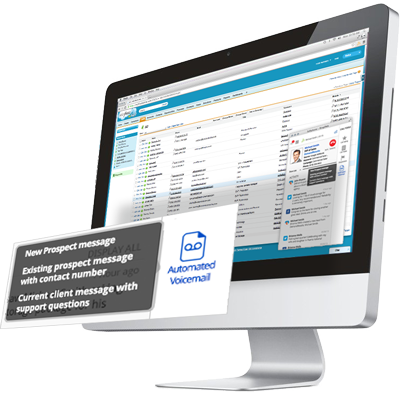 Another tool that Revenue.io offers reps is our Voicemail Drop tool. This saves time by enabling customers to leave voicemails with a single click. But, perhaps even more importantly, it empowers reps to test which messages are getting the most call backs. This is a great way to discover which value props really resonate with customers. If a particular message is inspiring way more calls back, see if you can be worked into a pitch.
Another tool that Revenue.io offers reps is our Voicemail Drop tool. This saves time by enabling customers to leave voicemails with a single click. But, perhaps even more importantly, it empowers reps to test which messages are getting the most call backs. This is a great way to discover which value props really resonate with customers. If a particular message is inspiring way more calls back, see if you can be worked into a pitch.
We have a lot of tools that can help your reps get more opportunities to go to bat. By following these steps, you can help your reps optimize their call messaging and hit more home runs!
Chances are that your sales reps aren’t spending enough time on the phone with customers. Put, hitting a home run is hard when you’re stuck in the dugout. The more time inside sales reps spend on calls, the more opportunities they’ll have to close deals. But sales processes often include blockers that keep reps from stepping up to the plate.
According to CSO Insights, only 41% of sales reps time is spent selling.
That time is consumed by activities like customer research, creating collateral, and manually entering data into CRMs.
gies, these sales processes can be optimized to help sales reps spend more time doing what they really want to do: closing deals.
Phone Skills Reps Must Master to Get a Black Belt in Inside Sales
In karate, there are a lot of skills that you need to master before gaining a black belt. You might be better at breaking boards with a high kick than anyone on the planet, but that skill alone is not enough . Sales is kind of like karate in the sense that there are a lot of individual skills that must be mastered in order to become a master. Martial artists have their dojos, but for sales development reps (SDRs), that dojo is the telephone.
As a sales sensei, it’s your job to help inside sales reps improve their phone skills. In one of my favorite all-time films, The Karate Kid, master sensei Mr. Miyagi begins teaching his student Daniel Larusso karate skills one at a time. In fact, Daniel-san doesn’t even know that, when Mr. Miyagi is teaching him how to wax his car, he is actually teaching him a vital karate skill. And just like Mr. Miyagi, you can help your reps achieve mastery by honing in on one call skill at a time.
Here is a list of seven crucial phone skills that all inside sales reps must master in order to achieve mastery.
Product Expertise
If a rep is going to sell a product, that rep should have a deep understanding of how that product works. In B2B tech sales, this often entails understanding what’s involved in implementation, possible integration points and more. The better a rep understands what she is selling, the easier time she’ll have conveying that product’s value. Begin by making sure that reps have their 30-second elevator pitch down. But then go deeper by ensuring that they truly are an expert in what they’re selling. This is key, because people buy from experts not novices.
Qualification
Reps need to be able to identify whether a lead is potentially a good fit quickly. This entails asking the right questions to ascertain a lead’s budget, needs, and other factors to establish suitability. Help reps understand which questions to ask prospective clients based on their roles. Using buyer personas can help train reps to tailor messaging to specific buyer roles.
According to Andy Paul, author of must-read sales books Amp Up Your Sales and Zero Time Selling, “If the prospect isn’t in general agreement with your estimates of the value that they receive from your products or services then, then you don’t have a qualified prospect.”
Rapport
We buy from salespeople we like. If a rep sounds like a robot or is just pitching a mile a minute without building rapport, it can diminish that rep’s ability to succeed. However, some reps spend too much time building rapport and not enough time talking business. In a fast-paced sales environment, reps probably shouldn’t be spending fifteen minutes talking about their March Madness picks with a prospect—even if that prospect is a fan of college hoops.
Tone
A rep’s overall tone should blend eloquence, authority and affability. If reps are stumbling, sound detached or seem timid, they will need some guidance. Try doing practice calls. Your whole team can even get together and offer reps feedback on tone. This skill takes a while to master, so don’t expect your rep to sound like Tony Robbins overnight.
Conveying Value
Why is your product valuable to a particular prospect? Being able to convey value requires getting inside the heads of customers. Train reps to see your offering through the eyes of customers. Again, using buyer personas can help reps understand how to tailor messaging to buyers in specific roles.
Overcoming Objections
Reps will nearly always be hit with various objections. Maybe a prospect doesn’t have the budget set aside. Perhaps they need to get approval from other team members. Sure, some prospects aren’t suitable, but for those that are, it’s important that reps are adroit at handling objections.
To quote TOPO analyst Bryan Gonzalez “In prospecting, the vast majority of objections are simply knee-jerk reactions from busy people who don’t yet see the value in working with you.” The good news is that a lot of objections can be overcome by communicating your value early and starting small.
According to Gonzalez “Don’t sell the product, sell the next step…If they ask a product question, recommend that you show them in the next meeting.”
Defines and Achieves Objectives
Every sales conversation should have an objective. Sometimes the objective is to schedule a demo. Other times it’s to qualify a prospect in or out simply. Inside sales reps must be aware of what their objective is for 100% of their calls. And then, they must steadily move conversations toward that objective. This is perhaps the most important of all sales skills to master, because it’s what moves deals forward.
In order to help you train your sales reps to be “black belts” in inside sales, we’ve created the “Ultimate Call Evaluation Checklist.” This checklist will help you identify where reps are excelling and where they need improvement. So that you can help your reps master every skill they need to be master salespeople.
Inside Sales Rep Data
It’s a good time to be an inside sales rep, as new data reveals that outbound prospecting isn’t just alive and well – it’s thriving!
In April, we reported that a Bridge Group and AG Salesworks study revealed that in Q4 of 2012, reps were generating 32 opportunities per 1,000 outbound calls. Now, they have updated their data and released it in Outbound Index: issue #2 and the results are promising. Over the past two quarters, the outbound index (opportunities generated per 1,000 calls) has shot up 31%. Sales reps are now generating 42 opportunities that entered the sales organization’s pipeline for every 1,000 accounts prospected.
So sales reps and managers should expect more opportunities to arise from outbound prospecting efforts.
The Outbound Index
Given the size of the data set, we have every reason to believe that the study’s results are showing a real trend with actionable implications. The Outbound Index, which is based on actual transactional CRM data, drew from an expansive data set:
- Over than 50 technologies
- More than 270K touches
- Over 13K conversations
These numbers make a compelling case for outbound prospecting as a sales model. As the authors of the study wrote, “The point of all this isn’t to throw numbers at you, but to get you thinking about how to measure, benchmark, and manager your own outbound.”We couldn’t agree more! Sales managers need to know what percentage of outbound calls are driving opportunities.
One of the main reasons we developed Revenue.io is to give sales managers expanded insight into call metrics. Our softphone app for inside sales enables sales managers to take their team’s pulse in real time, enabling sales managers to not only know the percentage of calls creating opportunities but also driving revenue.
Will your team’s “outbound index” match up with the study? Now that you have an idea of how many calls should be creating opportunities you can see whether your reps are meeting, exceeding or falling short of expectations.
The Ultimate Sales Call Evaluation Checklist for Inside Sales Managers
Please tell me if this sounds familiar: a newly hired sales rep spends a week or a few studying your sales playbook, then jumps on a phone call. The call is terrible. When so much is wrong with a phone call, do you address style, substance, personalization, opening remarks, the ask, closing remarks, or what? Inside sales managers can take the time to review this checklist to better coach and organize their sales team.
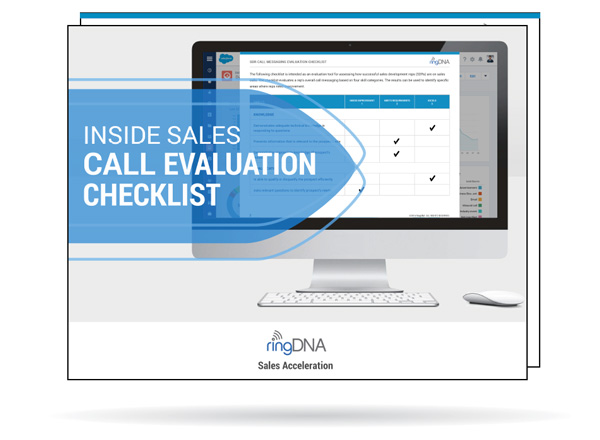 And here’s what happens next – the poor sales rep walks away with 40 notes. Guess how many of those items actually improve by the next day? As the proverb goes, “One who chases after two rabbits won’t catch even one.”
And here’s what happens next – the poor sales rep walks away with 40 notes. Guess how many of those items actually improve by the next day? As the proverb goes, “One who chases after two rabbits won’t catch even one.”
Many otherwise savvy sales managers simply don’t know where to begin when it comes to giving constructive feedback on sales calls. That’s why I’m so excited about our handy Sales Call Evaluation Checklist, which will help managers and reps improve their calls. Speaking of focus, this version is aimed primarily at SDRs since they are often the least experienced members of the team.
Sales Rep Feedback
Your reps are like anyone – they can only learn the feedback if it is targeted and incremental. That’s why we’ve drilled down into specific categories. When evaluating new reps, I strongly recommend that you help your reps improve in one category at a time.
Don’t try to improve everything all at once, or performance (and morale) can quickly degrade.
Use our cheat sheet to:
- Identify areas for individual improvement
- Discover areas for team improvement
- Find “model” sales calls that can be used to train new reps
Remember, every sales activity is leading up to one thing: a phone call. Not surprisingly, reps that have the best phone skills are almost always the ones that exceed quota.
Improving Sales Quota
And if you’re looking to use calls to improve your entire team, you’re not alone. In our ongoing mission to help sales teams be more productive, smarter and successful, I’ve noticed a stark uptick in the number of managers who are using call recordings for training.</p>
Some do just what you’d expect with call recordings – carve out a few minutes each day to make sure their new reps are on message, and deliver improvement tips. Others use call recordings as a team exercise, going so far as to hold weekly call contests that the entire team listens to, complete with prizes.
Good luck with your cheat sheet! Get it here.

